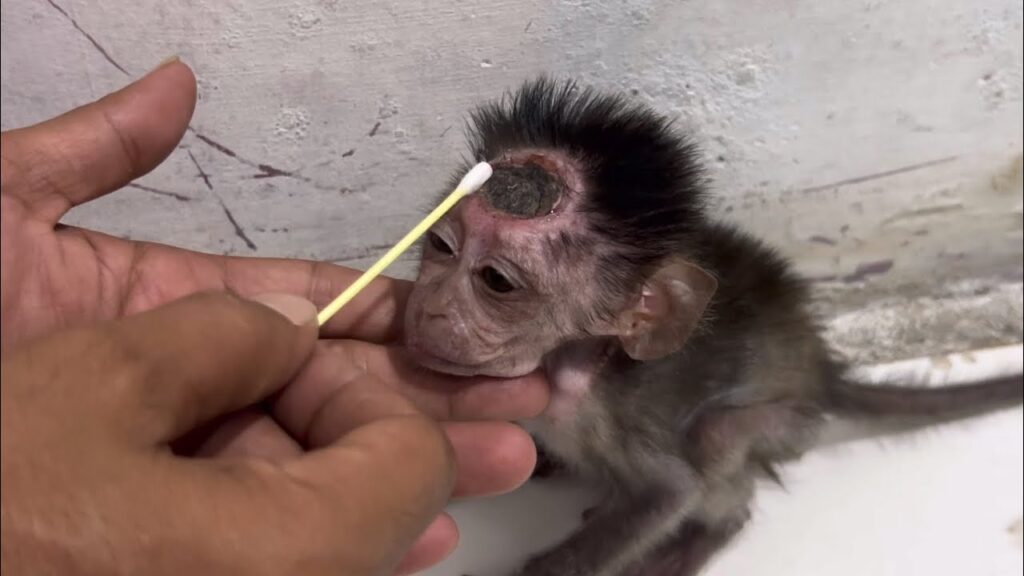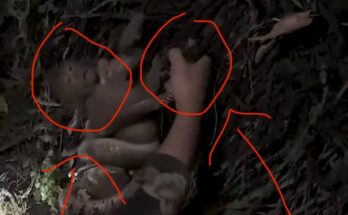
Physically, the damage was heartbreaking. His once sleek fur became rough and patchy, his body thin from malnutrition. Years of being tied to a post or small cage left him with sores and injuries that never properly healed. The emotional toll was even greater — he no longer played, no longer reached out to others, no longer trusted anyone. His spirit, once wild and full of energy, had been broken. He would sit quietly in a corner, rocking back and forth, a behavior common in traumatized primates. It was as if he was trying to comfort himself in a world that had shown him nothing but cruelty.
Thankfully, not all hope was lost. One day, rescuers found him — weak, silent, and frightened. They gently freed him from his chains and brought him to a sanctuary where compassion replaced cruelty. There, he was given medical care, nutritious food, and, most importantly, patience and love. Healing would not happen overnight; the scars inside him ran deep. But slowly, the little monkey began to show signs of recovery. He started to eat more, explore his new surroundings, and even form bonds with other rescued monkeys.
His story serves as a powerful reminder of the consequences of animal exploitation. No creature deserves to live in pain for human amusement. Monkeys are intelligent, emotional beings that need space, family, and freedom. Through awareness and education, we can prevent stories like his from repeating. The journey from suffering to healing is long, but with kindness, even the most broken souls can learn to trust again.


